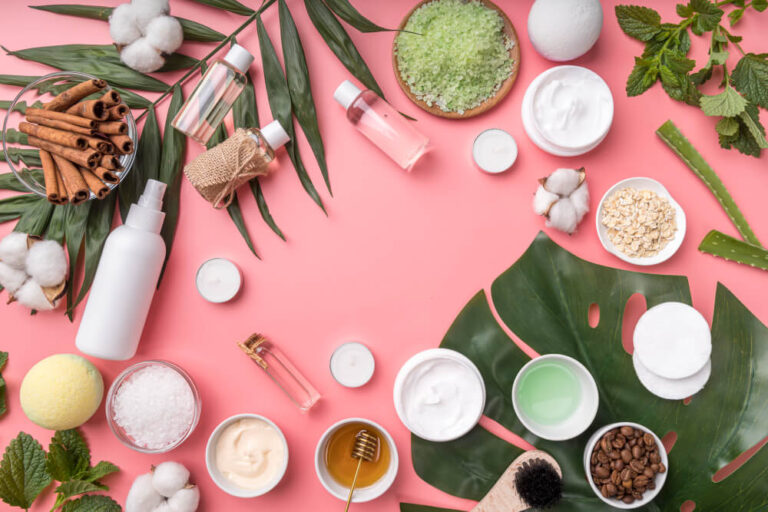Keratosis pilaris is a common but bothersome condition that can affect the face, body, and legs. It causes the skin to appear uneven and can impact self-confidence. If you’re curious about what keratosis pilaris looks like, what causes it, and how to prevent and treat it, this article from our professional waxing salon in Bangkok provides the answers you need.
What is Keratosis Pilaris?
Keratosis Pilaris (ingrown hair) is a skin condition characterized by blocked hair follicles. This blockage results in small, raised bumps around the follicles, usually in areas with dry, rough skin. These bumps are often felt as a rough texture when touched and can occur on the upper arms, thighs, buttocks, or cheeks. However, the condition does not typically cause itching, pain, or irritation.
Where Can Keratosis Pilaris Occur?
- On the arms: including elbows and underarms
- On the legs: including calves, thighs, and knees
- On the face
- On the back or torso
- On the buttocks
Symptoms of Keratosis Pilaris
Keratosis pilaris can affect people of all ages and genders. If you have this condition, you may experience the following symptoms:
- Small, raised bumps appear on the skin in areas with hair follicles.
- Commonly occurs on the upper arms, thighs, cheeks, or buttocks, and typically does not cause itching or pain.
- The affected skin area appears dry and rough.
- Changes in seasons, especially during winter, can make the affected skin even drier.
- Touching the affected area may feel like sandpaper.
What Causes Keratosis Pilaris?
Keratosis pilaris is caused by an abnormal buildup of keratin in the body. Keratin is a protein found in hair follicles that helps protect the skin from infection and harmful substances. When keratin accumulates excessively, it thickens the skin layer, preventing new hair from penetrating the surface. As a result, hairs grow back into the skin, causing bumps. This condition can lead to uneven skin texture. The primary cause is often linked to behaviors such as waxing like Hollywood wax or even Brazilian Wax and shaving, which can break hair off at the skin’s surface and lead to the hair being trapped in the follicles, resulting in keratosis pilaris.
Treatment for Keratosis Pilaris
1. Plucking Ingrown Hairs
This method is suitable when the hair is slightly visible on the skin’s surface. Using tweezers, gently pull the ingrown hair out to help alleviate keratosis pilaris. However, be cautious not to apply too much force, as it can cause skin irritation and inflammation.
2. Regular Exfoliation or Scrubbing
Exfoliating the skin helps to remove dead skin cells and prevent clogged pores, which can reduce the thickness of the skin in areas affected by keratosis pilaris, making it easier to remove the ingrown hairs. It’s recommended to use natural products such as loofah, turmeric, or tamarind. In addition to helping remove ingrown hairs, this also leaves the skin brighter and smoother.
3. Laser Treatment for Keratosis Pilaris
Using laser hair removal techniques can effectively address keratosis pilaris. The laser helps to shrink the ingrown hairs and flatten the raised bumps, resulting in smoother skin. This method is one of the most effective and quickest ways to treat keratosis pilaris.
4. Topical Application for Reducing Keratosis Pilaris
Topical treatments often contain ingredients like AHA, BHA, or salicylic acid, which are commonly found in acne medications or exfoliating products. These ingredients help to exfoliate the skin and alleviate the symptoms of keratosis pilaris by breaking down the keratin buildup, making it easier for the affected skin to shed and smooth out.
5. IPL (Intense Pulsed Light) Treatment
IPL, a type of laser treatment, is effective in treating keratosis pilaris. In addition to helping with issues like acne and enlarged pores on the face, IPL can also address keratosis pilaris by reducing red and dark spots associated with the condition.
How to Prevent Keratosis Pilaris
1. Avoid Picking or Scratching the Affected Area
Refrain from picking or scratching areas affected by keratosis pilaris, as this can cause wounds, red or dark spots, and lead to further complications requiring additional treatment.
2. Avoid Taking Showers with Water That Is Too Hot
When bathing, soaking, or swimming, avoid spending too much time in the water. The ideal duration should be around 10 minutes. Taking hot showers or staying in water for extended periods can strip the skin of its natural oils, leading to dryness and a lack of moisture. It’s also advisable to use body wash that suits your skin type.
3. Regularly Use Moisturizing Cream
After bathing, while your skin is still slightly damp, apply a moisturizing cream or lotion to your skin. Be sure to choose a lotion that suits your skin type to keep your skin well-hydrated.
Contact Us at Wax & Co, the Spa-Style Waxing Salon, HERE
You can book an appointment for waxing or inquire for more information through the channels below. Alternatively, you can visit any of our branches, just go to the one nearest you. Don’t let unwanted hair affect your confidence.
- Facebook: Wax & Co ร้านแว็กซ์สไตล์สปา
- Website: www.waxand.co
- Telephone: 063-9545166






